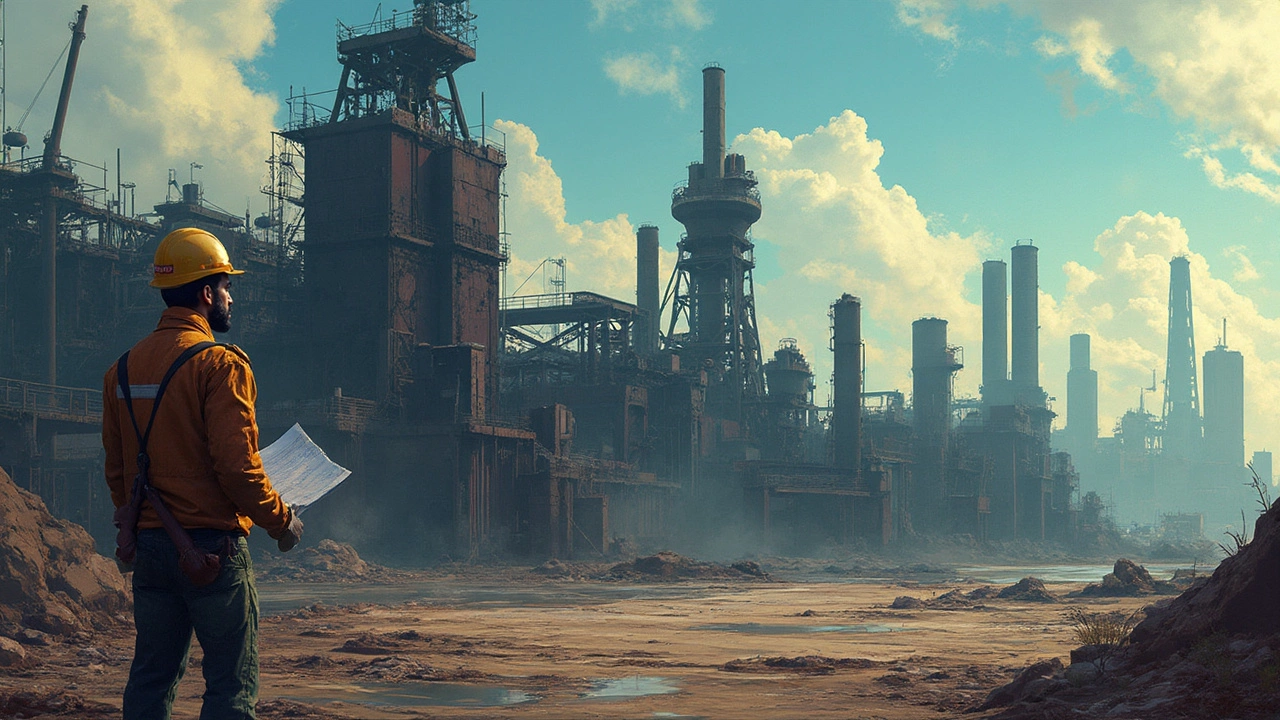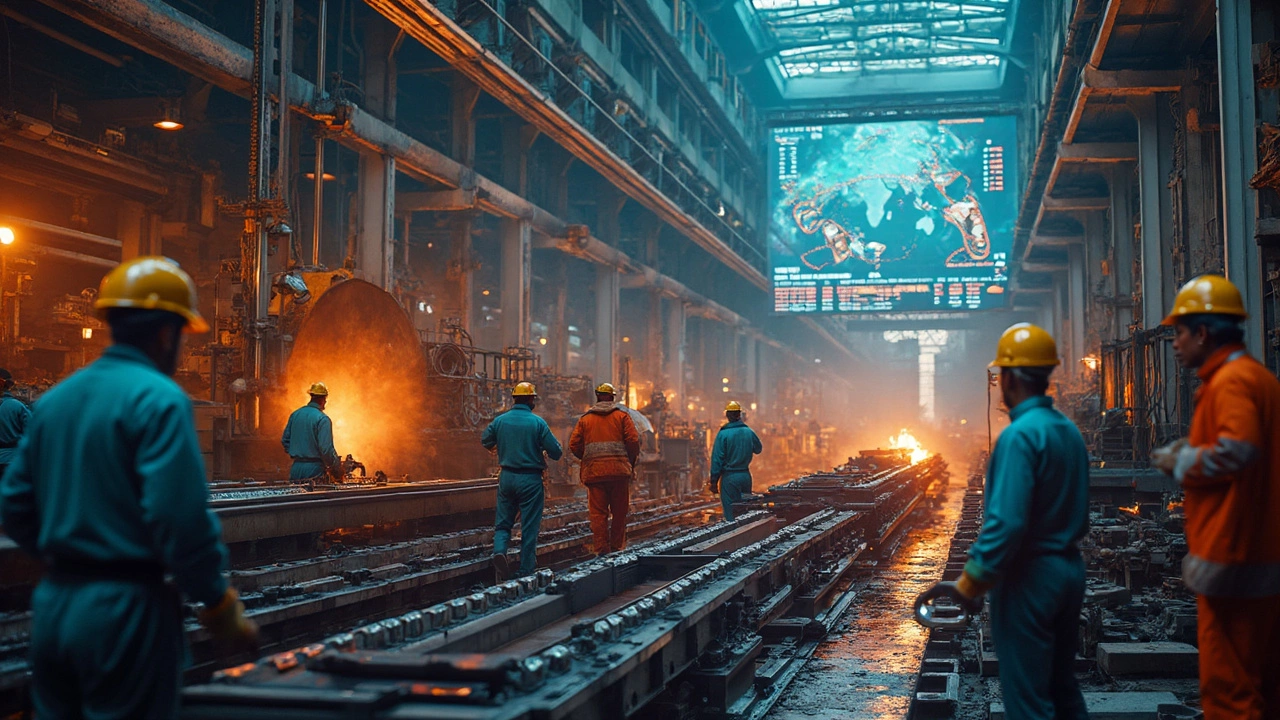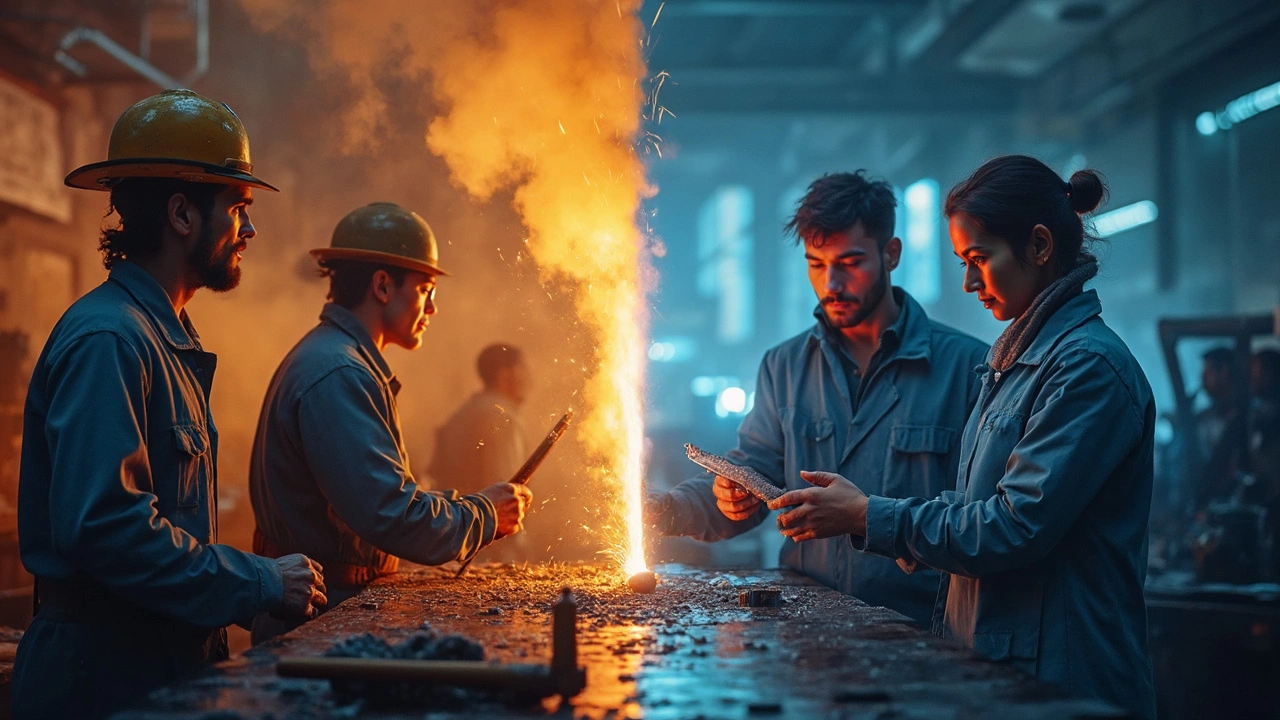Why Doesn't the US Make Steel Anymore? The Real Story Behind American Steel Manufacturing

You can still spot the old smokestacks if you drive through towns around Pittsburgh or the Great Lakes, but they don’t roar like they used to. People who grew up around those plants remember the whistle signaling shift changes, and maybe you know someone who built a solid life thanks to those jobs. But walk by those same mills now, and it’s mostly quiet.
So, did America just forget how to make steel? Not really. Here’s the thing—US factories once led the world in steel, pumping out massive beams for bridges, skyscrapers, and cars. That changed fast in the last few decades, and not because Americans suddenly fell out of love with steel.
If you’ve got a kid who’s curious about why you don’t see ‘Made in USA’ stamped on metal toys, it usually comes back to simple dollars and cents. Companies figured out they could buy cheaper steel from places like China or India, where wages are lower and environmental rules aren’t as strict. That was game over for a lot of hometown steel plants.
Still, you might be surprised—America does make steel, just not at the same massive scale. Next time you crack open a soda can or drive across a new bridge, there’s a good chance some of that metal came from a smaller, more modern US mill. But the glory days? They’re mostly gone.
- Steel Was Once King in America
- Global Competition Shook Things Up
- Cheap Imports and Changing Technology
- What Happened to the Plants and the Workers?
- Is American Steel Making a Comeback?
Steel Was Once King in America
Not that long ago, America was the heavyweight when it came to US steel. Steel towns like Pittsburgh, Gary, and Bethlehem boomed so hard, they pretty much built the modern US skyline. From the Empire State Building to the Golden Gate Bridge, if you pointed to something shiny and strong from the mid-1900s, chances are American steel was behind it.
During the peak years—think 1940s to early 1970s—US mills produced more steel than any other nation in the world. World War II was a turning point; the country basically cranked up the factories to fuel the war effort, rolling out everything from tanks to battleships by the thousands. After the war, American suburbs took off. Demand for steel soared thanks to new cars, appliances, and all those cookie-cutter houses popping up everywhere.
Factories ran 24/7. It was tough, noisy work, but the paychecks were solid. Generations of families relied on those jobs, and unions helped make sure workers had pretty decent benefits, too. The industry wasn’t just about big buildings—it put food on the table for millions.
It wasn’t all just about brute force either. American steel companies built entire communities. Schools, parks, and hospitals sprung up around the plants. Social life, charity events, and even the local sports teams often traced back to the mill owners’ donations. Your family’s whole social calendar might revolve around the steel industry’s rhythm.
| Year | Steel Produced (Million Metric Tons) | Steelworkers Employed |
|---|---|---|
| 1950 | 87 | 650,000 |
| 1973 | 137 | 521,000 |
Here’s one more thing—steel wasn’t just about heavy industry. It was a symbol. Owning a Ford Mustang, grilling on a steel barbecue, or living in a house with steel beams meant you were getting a slice of that American dream.
Global Competition Shook Things Up
The big story is that the steel game went worldwide fast. Right after World War II, the US made more than half of the world’s steel. In the 21st century? The numbers slipped big time. Global competitors figured out how to make steel way cheaper, and American companies couldn’t keep up.
Take a look at this quick breakdown from the World Steel Association (2023):
| Country | Steel Production (million tons, 2023) |
|---|---|
| China | 1,018 |
| India | 140 |
| United States | 80 |
| Japan | 87 |
That chart makes it clear. China cranks out over a thousand million tons a year, while the US is under a tenth of that. Costs are a big reason why—the wages, electricity, and raw materials are all cheaper in Asia. That’s why US manufacturers started buying foreign steel—why pay more if you don’t have to?
The impact has been huge. Back in 1960, almost 600,000 Americans worked in US steel. Now? Fewer than 140,000. Whole towns lost their main source of income. It wasn’t just about cheap labor, either. Other countries built new, more efficient plants while the US stuck with outdated ones for too long.
"American steel producers got blindsided. New plants in Asia turned out the same quality product for 30% less. We couldn’t match those numbers." — John Ferriola, Former CEO of Nucor (2021, New York Times interview)
It’s easy to understand why US companies started shutting down big plants and outsourcing instead. No business wants to lose money if there’s a cheaper way. So, when you hear folks talk about jobs moving overseas, this is what they mean—manufacturers just started shopping elsewhere, and global competition changed the whole steel map.

Cheap Imports and Changing Technology
The real shift happened when foreign steel became a lot cheaper. In the 1970s and 1980s, countries like Japan and later China started churning out steel at prices that American companies just couldn't match. Their factories were newer, their workforces cost less, and their governments often gave tax breaks and subsidies to help them out. By 2008, China alone was making nearly half of the world's steel supply.
For US steel companies, this meant their products looked overpriced. Suddenly, local buyers—car makers, construction guys, even appliance brands—started grabbing these bargain imports. American companies couldn’t cut their prices that much and still pay workers decent wages or meet strict US environmental rules.
But it wasn’t just about price. New technology flipped the script, too. Other countries built state-of-the-art factories, while a lot of US plants were stuck using equipment older than most of the people working inside. When “mini-mills” came around, using electric arc furnaces instead of the massive old blast furnaces, it was like going from flip phones to smartphones—but not every American plant upgraded in time.
- Mini-mills could fire up quickly and produce smaller batches, perfect for changing market demands.
- They often recycled scrap metal, saving both cash and resources.
- They required fewer workers, pushing down the number of steel jobs even further.
The catch? Even the most advanced American mills couldn’t keep up with how cheap and fast steel was coming in from overseas. Unless you needed super-special steel (think NASA or military stuff), buying imported was just too easy on the wallet. US steel found itself squeezed from every angle—technology, price, and worldwide overproduction.
What Happened to the Plants and the Workers?
Back in the 1970s, you couldn’t drive through places like Bethlehem, Gary, or Youngstown without seeing huge steel plants working day and night. But then, one by one, those big factories started shutting down. The big break came in the late 1970s and early 1980s. Whole neighborhoods felt it when companies closed their doors, sometimes with just a few weeks’ notice.
If you look at the numbers, it’s pretty wild. In 1973, there were about 500,000 people working in American steel mills. By 2022, that was down to less than 85,000. That’s a drop of over 80%. Why? Imports and new technology did most of the damage. Mills had to compete with steel from countries where making it was just cheaper. Plus, a new way to make steel—using electric arc furnaces instead of the old blast furnace style—needed fewer people.
Old plants didn’t just get shut; a lot of them were torn down, turned into real estate projects, or just left empty. Check out the old Bethlehem Steel site—it’s now a casino and concert venue. Gary, Indiana, once buzzing with life, lost half its population as jobs dried up. Families moved away to chase work elsewhere, schools shut, and local stores tanked.
For the workers, it was a tough reality check. Many had done nothing but steel for their whole careers. Suddenly, they had to figure out new skills—everything from truck driving to tech support. Some retrained, some just got by on early retirement or disability checks.
Here’s a quick look at what happened by the numbers:
| Year | Steel Workers (in thousands) | Major Plant Closures Announced |
|---|---|---|
| 1973 | 500 | Bethlehem, Youngstown Sheet & Tube |
| 1990 | 250 | Gary Works Cutbacks, LTV Cleveland |
| 2022 | 83 | USS Great Lakes Idling |
With the decline of US steel, whole communities had to rethink what they could offer. Some old plants got turned into offices, shopping centers, or even movie sets. A few towns managed to pull off a comeback by focusing on other industries, but plenty are still struggling to find their feet.

Is American Steel Making a Comeback?
Here’s something that might flip your expectations: the idea that US steel is totally dead isn’t exactly true. Over the last few years, there’s actually been some buzz around bringing steel manufacturing back, or at least giving it a fighting chance. The big word here is "comeback," but let’s talk about what’s really happening on the ground.
Some older mills are gone for good—they're either abandoned or turned into hipster apartments. But new, smaller plants have popped up in different parts of the country. Think less giant city-sized facilities and more nimble, high-tech setups using electric arc furnaces instead of huge blast furnaces. These are way more energy-efficient and easier to start up. Companies like Nucor and Steel Dynamics are leading the charge here. And these new plants? They use a ton of scrap metal, which means less waste and lower costs.
Lately, the government has also stepped in. In 2018, the US put tariffs on imported steel from some countries to slow down the flood of cheap foreign steel. Some analysts credit these tariffs for helping keep certain American mills running, though it’s definitely a hot topic in politics and business circles. For American workers, this has meant a few more jobs at the newer plants, but nothing close to the old days when towns would grow up around steel factories.
- More investment is going into steel plants that use recycled metal, which is both cheaper and “greener.”
- US steel production has bounced back a bit since 2020—especially when the car and construction industries picked up steam again.
- Tech upgrades let American plants compete better on both cost and quality, though they don’t need as many workers as before.
Will the US steel industry ever reach the size it once did? Probably not. Most experts say American steel is here to stay, but it’s running leaner and meaner—with fewer jobs, tighter margins, and a laser focus on efficiency. If someone’s looking for work in steel today, the best shot is at these newer, more tech-focused mills or in recycling-related roles.





